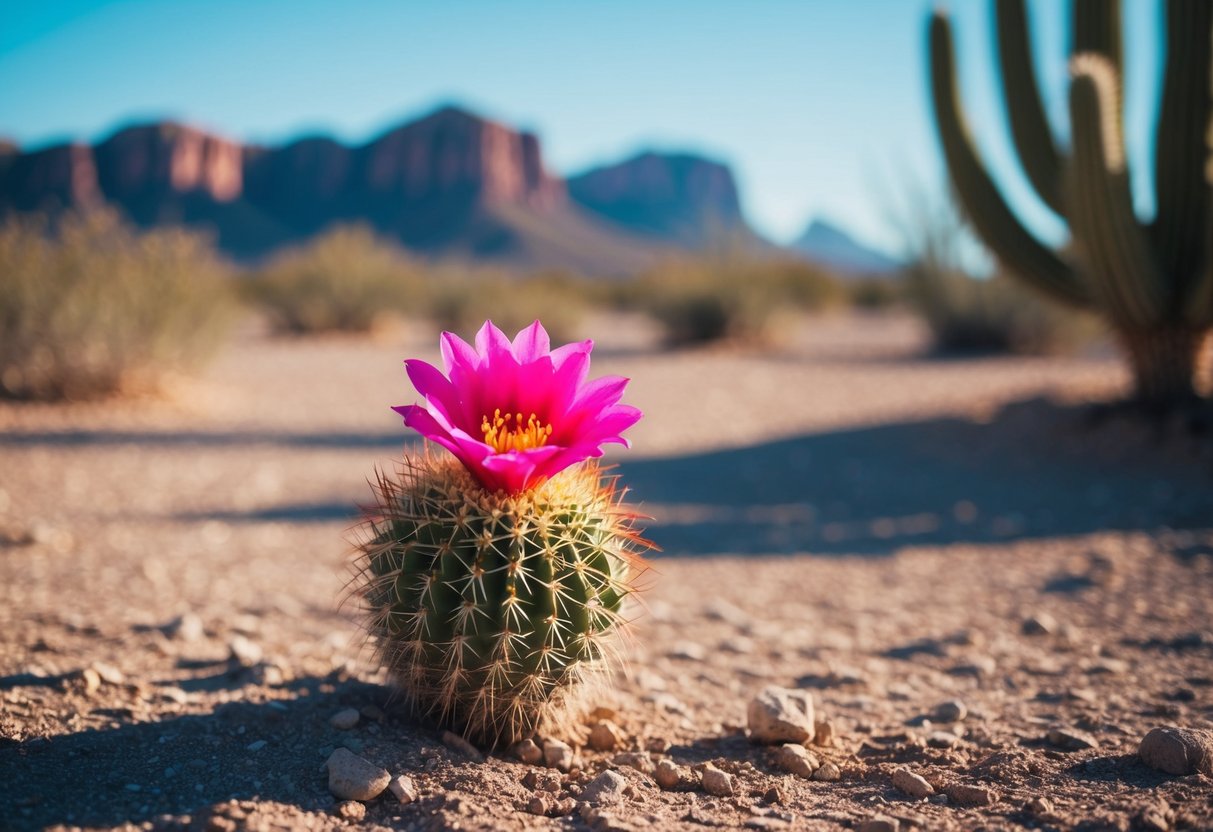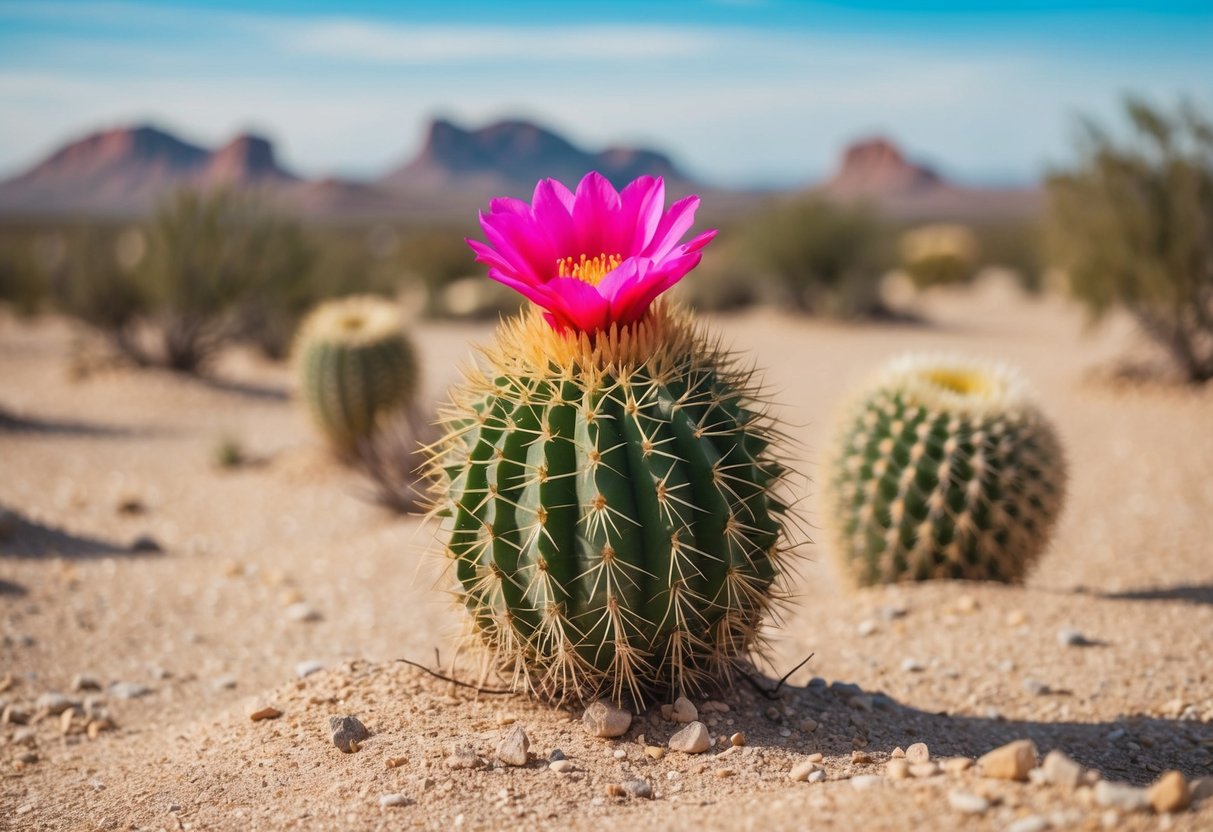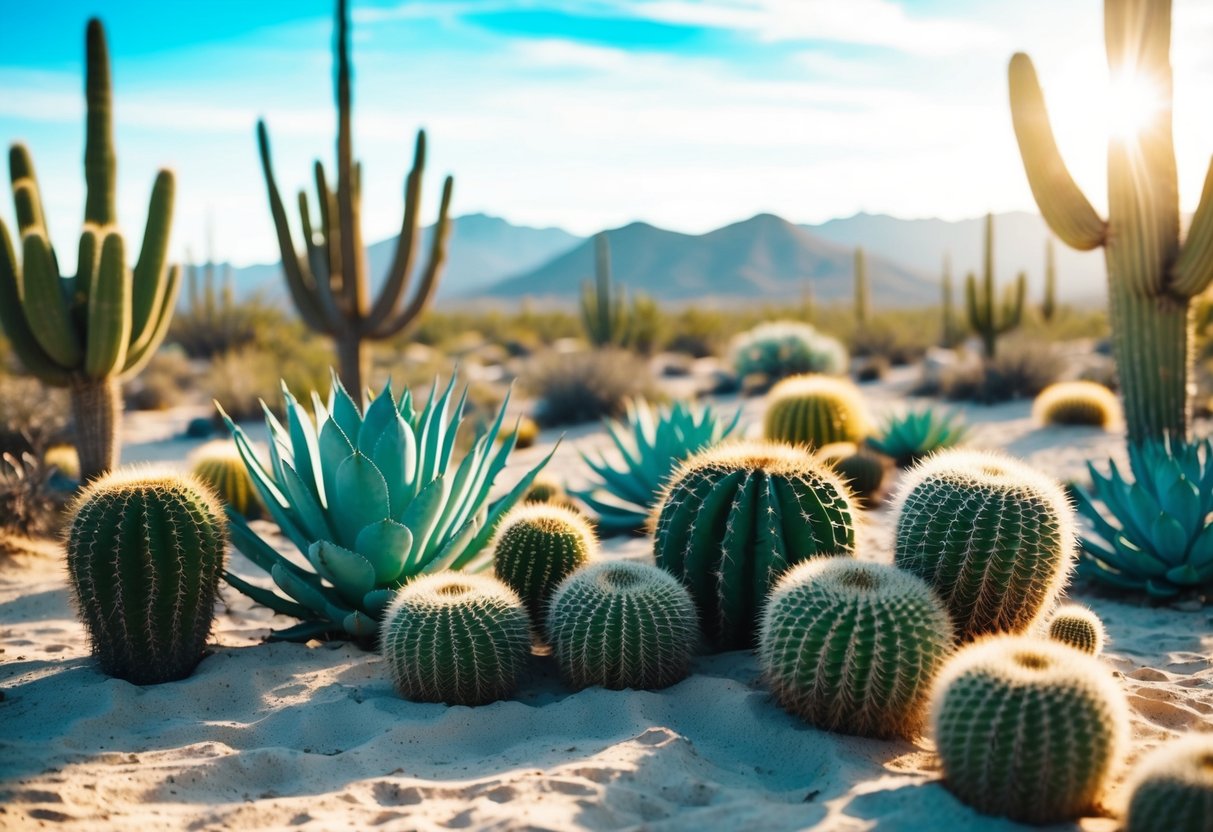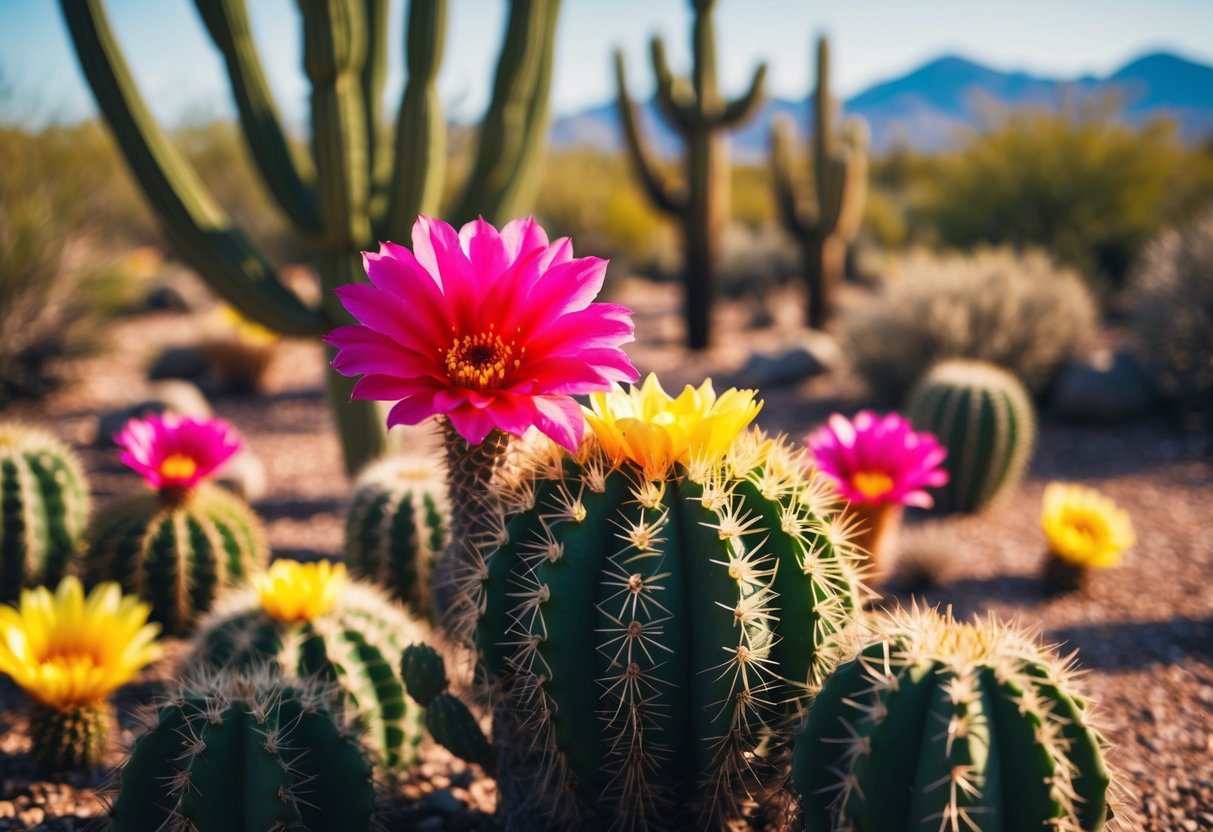What Flower Requires the Least Amount of Water? Discover Drought-Tolerant Blooms
If you’re looking to add some color to your garden without constantly worrying about watering, there are plenty of drought-tolerant options to consider.
One of the best choices is the African daisy, which thrives in dry conditions and can brighten up your space with little maintenance. These drought-friendly plants are perfect for low water gardens and make gardening enjoyable even in the hottest months.

Another great pick for your garden is the Verbena, known for its vibrant blooms that require minimal watering. This plant not only adds a burst of color but also stands up well to dry climates. It’s a fantastic choice if you want to reduce your water usage while still having a beautiful garden.
You might also consider adding Poppies, which are famously hardy and adapt well to dry conditions. With so many drought-resistant plants available, you can create a stunning garden without the need for frequent watering.
Understanding Drought-Tolerant Plants

Drought-tolerant plants are ideal for gardening in low-water conditions. They help in landscaping, making gardens beautiful with minimal water needs.
Defining Drought Tolerance
Drought tolerance means a plant can thrive with very little water. These plants store water in their leaves, stems, or roots and have deep root systems.
Some of the best drought-tolerant plants include succulents, which are known for their water-storing capabilities. Yuccas and lavender are other great examples. They both do well in dry and sunny environments, making them perfect for low water gardens or rock gardens.
Make sure to choose the right plants for your climate. Look for varieties like California poppy or yarrow. They are well-known for requiring minimal water. Both are known for their striking appearance and ability to withstand dry spells.
Benefits of Low-Water Landscaping
Low-water landscaping is not just eco-friendly, but also cost-effective. By using drought-tolerant plants, you can significantly reduce your water bills. This type of gardening often involves using mulch, rocks, and innovative designs to retain moisture.
A garden with drought-tolerant plants needs less maintenance. Once established, these plants require minimal care, which means less watering and fewer fertilizers. This approach also promotes biodiversity by supporting native species that are naturally adapted to the local environment.
Low-water gardens can be visually stunning. They often include unique plants with interesting foliage and colorful blooms, like lavender or poppies. These add a touch of beauty without demanding constant attention and resources.
Popular Drought-Tolerant Perennials and Annuals

Flowers that don’t need much water are perfect for dry gardens. There are both perennials and annuals that can thrive in these conditions. These plants are tough and beautiful, making them great choices for low-water gardens.
Perennials That Thrive with Minimal Water
Perennials like Yarrow and Coneflower need very little water and are perfect for dry gardens. Yarrow (Achillea) offers clusters of tiny flowers and grows well in zones 3-8. It’s not just drought-resistant but also attracts pollinators.
Echinacea, or Coneflower, is another excellent choice, known for its resilience and stunning blooms. It can survive in zones 3-8 and grows well even in poor soil.
Sedum and Russian Sage are also great options. Sedum is a succulent that requires little care and can handle full sun. Russian Sage (Perovskia) provides a splash of blue in zones 4-9. These plants create a colorful garden with minimal effort.
Annuals Suited for Dry Conditions
For annuals, you might consider California Poppy or Cosmos. These flowers are highly drought-resistant and add vibrant colors to any garden.
California Poppy thrives in full sun and can handle rough climates with ease. These flowers are low-maintenance and are perfect for adding bright orange hues to your garden.
Cosmos does well in poor soil and bright sunlight, offering long-lasting blooms. Similarly, Marigolds can withstand dry conditions and bloom in rich yellows and oranges. These annuals will not only survive but flourish, making them ideal choices for gardeners keen on minimal watering.
Best Practices for Growing Water-Efficient Gardens

Creating a water-efficient garden involves careful attention to soil conditions and smart watering techniques. Focus on preparing well-drained soil and use efficient irrigation to minimize water usage in your garden. These practices will ensure you maintain a healthy and low maintenance garden.
Soil Preparation and Maintenance
For a water-efficient garden, you should start with well-drained soil. Adding organic matter like compost improves drainage and retains moisture. A good mix is about 4-6 inches of organic material worked into the top 12 inches of soil. This helps your plants access water easily while reducing evaporation.
Try adding mulch around your plants. It acts as a barrier to prevent water loss from the soil. Mulch also suppresses weeds, meaning less competition for water. In addition, ensure you’re testing the soil’s pH. Aim for a pH level that matches your plants’ needs to promote strong growth.
Irrigation and Water Conservation Techniques
When it comes to watering, less is often more.
Drip irrigation systems are excellent for targeting plant roots directly, reducing water wastage. They are easy to install and need little maintenance, making them ideal for busy gardeners.
Set up a schedule for watering in the early morning or late evening. This minimizes water loss through evaporation. You could also collect rainwater in barrels for another sustainable watering option.
Understanding drought-tolerant plants can also save water. Look for plants that thrive in dry conditions, like lavender or succulents, and place them in appropriate garden zones. This creates a lush, vibrant garden that uses minimal water resources.
Succulents and Cacti: Nature’s Water Savers

Succulents and cacti are uniquely adapted to survive with minimal water. They store moisture in their thick leaves and stems, making them perfect for dry climates and busy gardeners.
Succulents for Home Gardeners
Succulents like agave and desert rose are great for your home garden. They come in various shapes and sizes and need little watering. Agaves have sharp leaves and are very hardy. The desert rose blooms with beautiful flowers, adding a splash of color. Lithops, also known as living stones, blend in with pebbles and attract attention with their unique appearance.
Stonecrop succulents, or sedums, are low-maintenance. They can grow both indoors and out. These succulents thrive on sunlight and well-drained soil. Their ability to store water in their leaves makes them a favorite for those looking for a sustainable garden.
Cacti Varieties for Drought Resistance
Cacti are among the best plants to withstand dry conditions. Known for their resilience, they can survive long periods without water. The barrel cactus features a rounded shape and can store water for months. Prickly pear cacti, with their flat pads, are both attractive and functional, offering edible fruit in some types.
Certain cacti, like the iconic saguaro, are symbols of the desert. While they’re large and impressive, smaller varieties also thrive in containers or small garden spaces. These cacti need minimal care, just sunlight, and infrequent watering, making them perfect for gardeners who want stunning plants without much fuss.
Attracting Wildlife with Drought-Resistant Flora

Drought-resistant plants not only save water but also bring wildlife to your garden. These plants draw pollinators like bees and butterflies and create habitats for local animals. By choosing the right flora, you can support the ecosystem around you.
Plants That Attract Pollinators
Certain drought-resistant plants are perfect for attracting pollinators. Butterfly weed (Asclepias tuberosa) and penstemon are excellent choices. They both require minimal water and can thrive in dry soil. You might also consider planting Achillea millefolium (yarrow), which has clusters of tiny flowers that bees love.
Lavandula (lavender) is another great addition. Its lovely scent does wonders in attracting bees. Black-eyed Susans (Rudbeckia) and blanket flowers (Gaillardia) are colorful options that butterflies enjoy.
Creating Habitats for Local Fauna
Planting shrubs can help create shelter for small mammals. Consider options like native shrubs that need little water and provide places for animals to hide. These plants can also offer seeds and berries as food sources.
Native grasses are another good option. They provide nesting sites for birds and hiding spots for small animals. In times of drought, local wildlife can find refuge and sustenance in your thoughtfully designed garden.
By incorporating these plants, you can turn your garden into a haven for wildlife.







